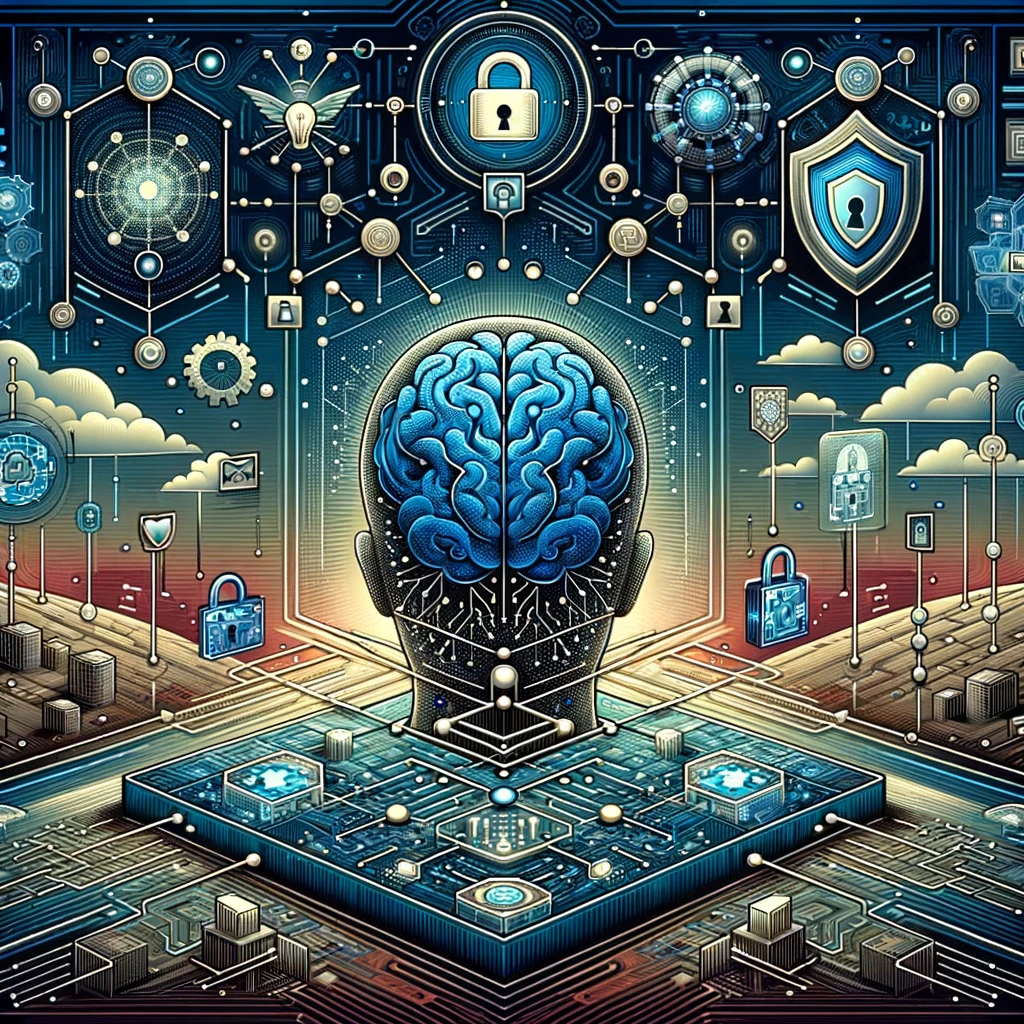Is 2024 the Year of AI-powered Cybersecurity Defence?
Cyberthreat can be seen as technology's evil twin.
It advances alongside technology, and constantly seeks opportunities to exploit any weaknesses. It's therefore inevitable that artificial intelligence (AI) is fast becoming the new cybersecurity battleground.
The security implications of AI make for dramatic headlines, such as those about the UK government report into the increased risk of cyber-attacks driven by artificial intelligence.
But should we then assume that AI’s impact on cybersecurity will be overwhelmingly negative?
Of course not. The increasing use of AI in cybersecurity can boost cyber protection and make critical systems more resilient in 2024.
There are three major areas of cybersecurity advancement involving AI:
- AI-driven threat detection
- Anomaly identification
- Adaptive defence mechanisms
Risk vs Opportunity
In AI, as with other technologies, risk develops alongside opportunity.
More and more businesses and organisations are adopting artificial intelligence. It’s becoming embedded in their digital infrastructure.
But, like other systems, AI can be manipulated by hostile parties.
The new global guidelines on AI security issued by the National Cyber Security Centre (NCSC) address concerns over system security.
They cover four major areas in the lifecycle of AI system development:
- Design
- Development
- Deployment
- Operation and maintenance
The guidelines emphasise the fundamental need for security across these areas and advocate an approach to AI system development where being secure must always be the default setting.
Potential Vulnerabilities of AI
The rapidity, efficiency and convenience of AI contribute to its potential vulnerabilities.
It offers done-for-you solutions and operations that minimise human input. This can lead to an over-reliance on AI, where people accept its recommended decisions, even if they run counter to intuition and, ultimately, are wrong.
AI is only as reliable as the information it gathers and processes. Its algorithms have the potential to perpetuate bias and inaccuracy. While these elements may not originate in malicious actions, they still represent significant threats.
Similarly, privacy concerns for companies using AI represent reputational as well as criminal risk.
Everyday AI Cybersecurity Risks
Alarmist or pessimistic interpretations of AI position it as a looming threat.
But the truth is that it’s already part of everyday life, from the face-recognition ID you use to open your mobile phone to the Google searches you make and your online banking transactions.
AI cybersecurity risks exist at both macro and micro levels – they can disrupt governments and global trade but also expose individuals to fraud and identity theft.
These are sound and pressing reasons why 2024 should be the year of AI-powered security.
But what does AI-powered security look like?
-
AI-driven Threat Detection
AI helps cybersecurity defend systems against evolving threats. This is preventative as much as defensive.
In IT support and maintenance, proactivity is standard practice. This is also the case with cybersecurity. Acting to prevent malicious or fraudulent cyber activity helps to minimise overall cybersecurity risk.
AI supports proactive threat detection by analysing massive quantities of data in real-time and pinpointing threats and anomalies precisely. Such is AI's advanced accuracy, that it spots the signs traditional security tools might miss.
AI’s accelerated management of data makes it ideal for predicting potential threats.
This processing and analysis, coupled with AI’s advanced learning capacity, means it can even identify threats that aren’t currently known by conventional detection.
It will match known threat actors to potentially vulnerable systems.
-
Anomaly Identification
Anomaly identification or detection identifies things that deviate from the norm. These data points are outliers – they differ from other observations significantly.
There are several reasons why these outliers show values that stand out from a pattern. They may be down to errors or defects, but they can also indicate unusual network activity resulting from cyberattacks.
Anomaly detection isn't a new phenomenon. It's been long-established in statistics.
However, AI is making it easier to identify anomalies as part of cybersecurity best practices.
Recognising these data points is a preventative security measure. And anomaly detection helps optimise the performance of machine-learning algorithms.
-
Adaptive Defence Mechanisms
Cyberthreats are continuously evolving. Systems must adapt, and keep adapting, to meet and mitigate these threats.
AI is an enabler of adaptive defence mechanisms, offering significant advantages to cybersecurity.
As we’ve already highlighted, a central feature of AI is its capacity to keep learning new things. This is the foundation for how it can drive adaptive defence mechanisms.
The continuous learning inherent in AI-powered cybersecurity systems supports ongoing threat detection and prevention. They provide automated responses that change and evolve constantly to keep up with the shifting cyber threat landscape.
AI and Cybersecurity
AI and cybersecurity are co-dependent. AI's opportunities come with significant risks. Advanced cybersecurity can mitigate these risks using AI-based technology.
The long-term benefits of applying AI to cybersecurity are clear:
- It improves and heightens security, proactively identifying potential threats
- It protects data and systems by detecting anomalies
- It keeps learning and adapting to meet changing challenges and new dangers
2024 will continue to be a year of risks and opportunities for businesses and organisations embracing and exploring new technologies.
AI-powered cybersecurity is essential for reducing these risks and maximising these opportunities.
We can help you explore and apply AI through virtual reality, simulation, and visual displays.
Contact us to find out more about our work and our vision for the future.





















